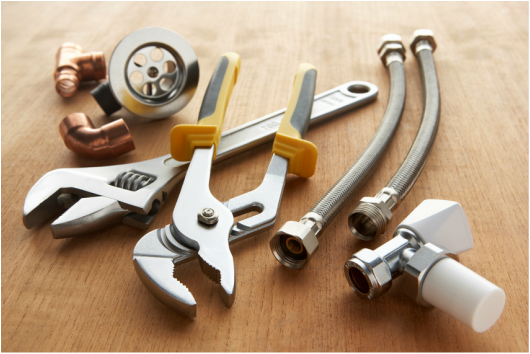
A sump pump is used to remove water that has accumulated in a basin. In residential cases this is often found in the basement of the home. The water may enter through a basement waterproofing system, or because of rain or natural ground water. These pumps are regularly used when flooding happens regularly and to solve dampness issues in the home.
There are two types of sump pumps most commonly found. The pedestal sump pump has a motor mounted above the sump, where it is more easily serviced, while the submersible pump is mounted inside the sump and specially sealed to prevent electrical short circuits. Submersible pumps have a shorter shelf life but are less likely to clog from debris.
Sump Pump Selection
There are a variety of sump pumps that are appropriate for different jobs, depending on the size and intensity. Different options to consider include:
- Automotive vs. manual
- Horsepower
- Head Pressure
- Power cord length
- Phase and voltage
- Water level sensing type
- Backup system and alarm
Battery Back-Up
Some people decide to invest in a battery-powered sump pump that will operate if the first pump fails. Backup pumps can provide long-lasting protection from power outages, sump pump failures, blown fuses and similar issues. A battery back-up can also be very useful if your primary sump pump is overwhelmed by very high waters. Some pumps can be set to automatically kick in when water levels reach a certain point.
Choosing your Battery Back-Up Sump Pump
Look for back-up sump pumps that have additional safety features such as automatic starts, alarms and home alarm integration. Remember that there are many different products, all customized to tackle a different challenge in your home. There are different sized pump systems as well as different basement drains.
Consulting with an industry expert is the best way to ensure you choose the right product for your home. Many businesses will insist on coming to your home to ensure they recommend the proper products and provide an accurate quote.
There are two types of sump pumps most commonly found. The pedestal sump pump has a motor mounted above the sump, where it is more easily serviced, while the submersible pump is mounted inside the sump and specially sealed to prevent electrical short circuits. Submersible pumps have a shorter shelf life but are less likely to clog from debris.
Sump Pump Selection
There are a variety of sump pumps that are appropriate for different jobs, depending on the size and intensity. Different options to consider include:
- Automotive vs. manual
- Horsepower
- Head Pressure
- Power cord length
- Phase and voltage
- Water level sensing type
- Backup system and alarm
Battery Back-Up
Some people decide to invest in a battery-powered sump pump that will operate if the first pump fails. Backup pumps can provide long-lasting protection from power outages, sump pump failures, blown fuses and similar issues. A battery back-up can also be very useful if your primary sump pump is overwhelmed by very high waters. Some pumps can be set to automatically kick in when water levels reach a certain point.
Choosing your Battery Back-Up Sump Pump
Look for back-up sump pumps that have additional safety features such as automatic starts, alarms and home alarm integration. Remember that there are many different products, all customized to tackle a different challenge in your home. There are different sized pump systems as well as different basement drains.
Consulting with an industry expert is the best way to ensure you choose the right product for your home. Many businesses will insist on coming to your home to ensure they recommend the proper products and provide an accurate quote.
 RSS Feed
RSS Feed